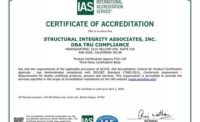Atlas Roofing Achieves First NFPA Fire Test Compliance

Atlas Roofing Corporation is the first polyiso manufacturer to successfully pass the new, more stringent NFPA 285 Fire Test criteria – a test that measures the fire propagation potential of a wall assembly.
“As a manufacturer that focuses on safety as its number one core value,” said Ken Farrish, President of Atlas Roofing Corporation, “we believe in and support the NFPA 285 committee’s decision to improve testing criteria for a more consistent and rigorous safety testing environment. We’re incredibly proud to lead our industry forward in fire safety as the first to meet the new criteria.”
New NFPA 285 Fire Test Criteria
In June 2017, the NFPA 285 committee approved new testing criteria after it was originally proposed last year. As an innovator in polyiso manufacturing, Atlas embraced and tested to the new criteria before it was approved by the NFPA committee or required by code. The NFPA 285 test includes the entire wall assembly as it is meant to be installed – incorporating everything from the interior gypsum to the exterior cladding.
The old NFPA 285 criteria allowed (ACM/MCM) metal panel joints to be placed outside of the area of the most intense flame contact, well to the sides of the windows.
The new NFPA 285 criteria offer a more consistent, worst case scenario test environment:
- 5.7.3.1 - Joints or seams representative of standard construction practices shall be incorporated into the test specimen.
- 5.7.3.2 - At least one horizontal joint or seam shall be located no more than 36 in. (0.91m) above the window opening.
- 5.7.3.3 - At least one vertical joint or seam shall extend upward from +/- 13 in. (0.33 m) of the center of the window opening width.
All Atlas EnergyShield PRO products have been tested and comply with the new NFPA 285 criteria – the first and only in the industry.
Looking for a reprint of this article?
From high-res PDFs to custom plaques, order your copy today!





.png?height=200&t=1742227021&width=200)
